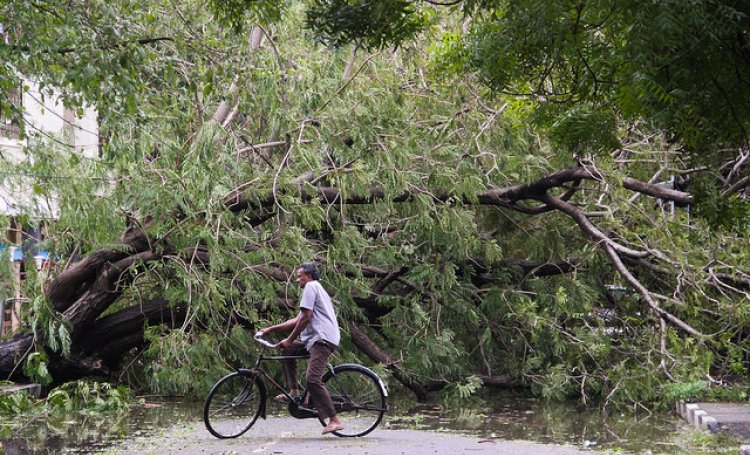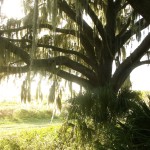by Dhiksha Balaji
photo: India Water Portal
We must account for the treelessness.
Cyclone Vardah has uprooted more than 13,600 trees in Chennai, according to an early official count of the Tamil Nadu government. Some experts will tell you that it was, for the most part, only the trees that were never meant to grow in Chennai that fell. William Roxburgh, the Scottish Founding Father of Indian Botany, brought the gulmohar that fell with such ease from Madagascar to grow in India during the Madras Presidency . The handsome copper pods that arrived with the British, who thought they’d add a bit of color to India’s boring avenues, took very quickly to falling as well. As these experts suggest, maybe these trees should have stayed where they came from.
But how shall we explain that the baobab, whose origin scientists have located somewhere in West Africa, seems to have found a very happy, solid home in Chennai’s soil? Perhaps, as my grandmother tells me, the baobab really did spring out of the earth as a jewel after the gods and demons churned the oceans. If so, it is certainly used to harsh weather conditions. Vardah was simply a distant memory of birth cycled back, without the urgency, warmth, or swirling darkness. Or maybe Chennai just really liked the baobab. It’s not as glitzy as the gulmohar or copper pod, but it keeps such pleasant, down-to-earth company.
The coastal trees, the coconut and palm, enjoyed another day on the beach for the most part. They have been fated to face away from the sea, but some would say that withstanding cyclone-force winds is worth a bit of change in orientation and a little less of a view.
Other experts say that it was mainly a lack of symmetry that caused this epidemic of uprootedness. It is the fault of those who call themselves “pruners” that the trees were left without a center of balance. A random vertical cut across the top of a tree that allows it to just escape electrocution by the telephone pole wires does not do the trick. Trees that receive this kind of treatment are weighted more heavily to one side and will tip very easily to one side at the slightest stimulus.
We have lost more than 13,600 trees and, as you can see, we know exactly why. Here’s what we do next. To reinstate a natural order, some environmentalists say we will need to plant one thousand seedlings for every tree that fell, a near impossible task. But others suggest, maybe we need just two seedlings for every tree? The experts aren’t sure.


